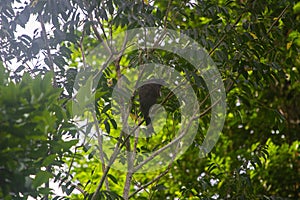- Stock Photography: WILDLIFE: CRANE HAWKS ARE RAPTORS THAT CAN EXTRACT PREY FROM TREES by Cduartefoto
- Price: 1$
- Size Facebook: 1702 x 630 px
- Size Twitter: 1500 x 500 px
- Size LinkedIn: 1128 x 191 px
More Facebook, Twitter and LinkedIn Cover Photos
Cover photo info
- Photo title: Wildlife: Crane Hawks are raptors that can extract prey from trees
- Author: Cduartefoto
- Cover photo description:
- A crane hawk is seen perched on a tree, in Uaxactun, Peten, Guatemala. The crane hawk Geranospiza caerulescens is a species of bird of prey in the family Accipitridae. Crane hawks occur in tropical lowlands at the edge of forests and are almost always closely associated with water. It is found in Argentina, Belize, Bolivia, Brazil, Colombia, Costa Rica, Ecuador, El Salvador, French Guyana, Guatemala, Guyana, Honduras, Mexico, Nicaragua, Panama, Paraguay, Peru, Suriname, Trinidad, Uruguay, and Venezuela. They are an irruptive and local migrant, probably moving in response to changing water conditions. These hawks often forage by scanning from a perch or on the wing and swooping down to grab prey. However, they are notable for having “double-jointedâ€Â tarsal bones, allowing them to reach into tree cavities and extract prey, a trait they share only with the genus of African harrier-hawks Polyboroids. Their main prey are small vertebrates, especially rodents, bats, lizards, snakes, and small birds, but they have also been known to eat larger insects and other arthropods and snails. Nowhere is the crane hawk particularly common, but it is still widely distributed. However, it is considered threatened in Mexico, endangered in El Salvador, and at low risk in Argentina.
- Image ID:171580881
- Views:0
- Downloads:0
Keywords for Facebook, Twitter and LinkedIn timeline photos
accipitridae
animal
argentina
belize
bird
bolivia
brazil
caerulescens
colombia
costa
crane
ecuador
edge
family
forest
found
geranospiza
guatemala
hawk
honduras
irruptive
lical
lowland
mexico
migrant
perched
peten
prey
raptor
rica
salvador
species
tree
tropical
uaxactun
water
wildlife














